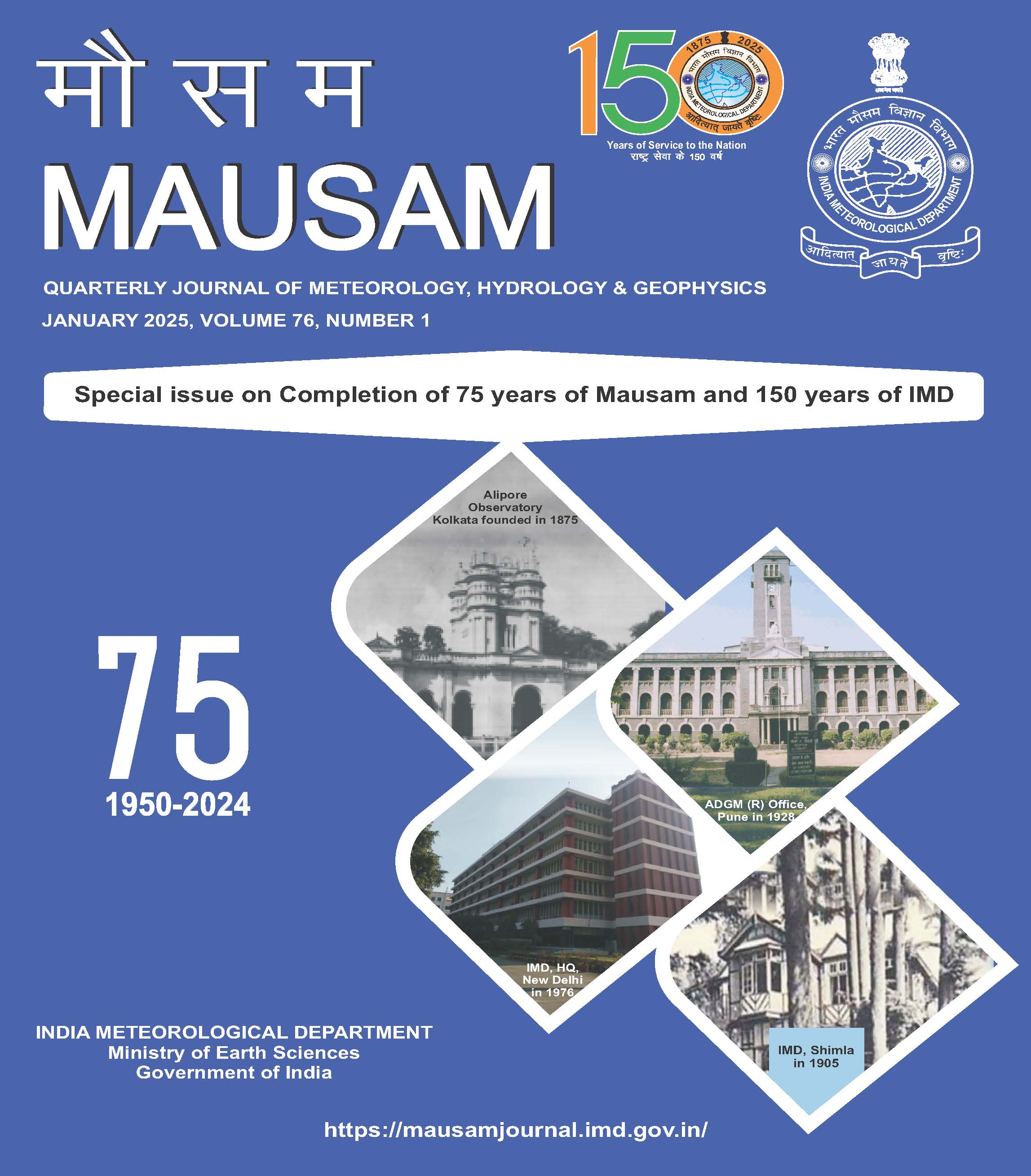Evolution of thunderstorm monitoring & Forecasting in India
DOI:
https://doi.org/10.54302/mausam.v76i1.6416Abstract
Thunderstorms over India are associated lightning, rainfall, dust storms, gusty winds and hail. The short lead period for forecast, short lifetime, rapid temporal evolution, mesoscale region of occurrence and associated severe weather cause thunderstorms to be amongst the most devastating weather phenomena over India. The present study reviews the gradual evolution of thunderstorm monitoring and forecasting over India. The study highlights the fact that while monitoring and forecasting these weather phenomena has a long history in India, this field has gained impetus in recent years with the technological advancement in monitoring and forecasting of thunderstorms, awareness of the devastation potential as well as improvement of communication methods. Synoptic understanding of these weather systems which evolved during the last century has been complemented in recent years with in-depth understanding of their mesoscale nature due to improvement and densification of the network of surface observatories, Doppler Weather Radars, ground based lightning detection network and upper air soundings and space based Geostationary satellites. These datasets have also brought about a remarkable improvement in NWP models with mesoscale data assimilation. All these improvements are integrated into Standard Operating Procedures for thunderstorm forecasting in short range to nowcast scale, which has produced reliable forecasts of thunderstorms and associated phenomena for the general public in recent years. Additionally, the awareness of the high cost of human casualties has also brought about a requirement of location specific, actionable thunderstorm forecasts with impact information and colour coded location specific warnings as thrust areas in recent years.
Downloads
Published
How to Cite
Issue
Section
License
Copyright (c) 2025 MAUSAM

This work is licensed under a Creative Commons Attribution-NonCommercial 4.0 International License.
All articles published by MAUSAM are licensed under the Creative Commons Attribution 4.0 International License. This permits anyone.
Anyone is free:
- To Share - to copy, distribute and transmit the work
- To Remix - to adapt the work.
Under the following conditions:
- Share - copy and redistribute the material in any medium or format
- Adapt - remix, transform, and build upon the material for any purpose, even
commercially.



